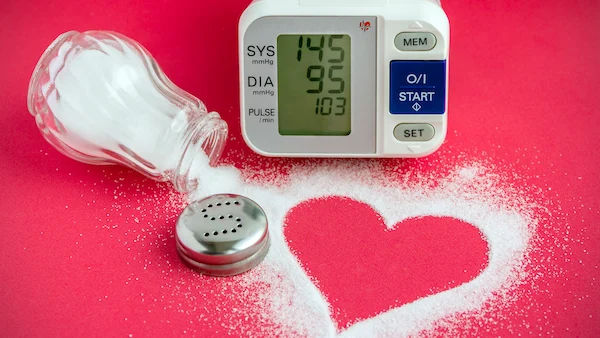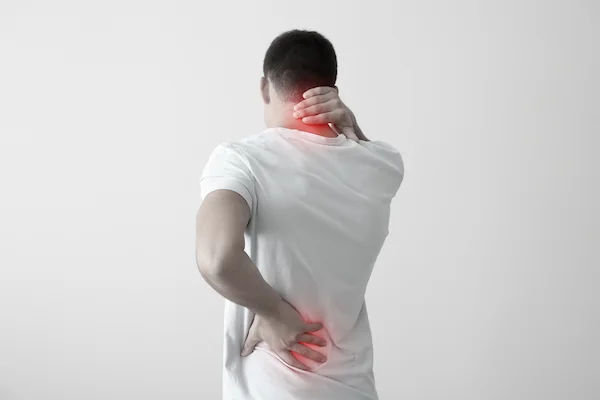Safe Patient Handling: Practices, Equipment, Techniques And Limitations
Discover safe patient handling practices, essential equipment, techniques, and limitations to ensure patient comfort and reduce injury risk. Learn more about best practices in healthcare today.

Written by
Last updated on 3rd Jul, 2025
SPF (Safe Patient Handling and Mobility Framework) is a set of safety practices that helps minimise the risks of injury for both patients and healthcare staff. Risks of injury are prevalent while lifting or transferring patients within the medical setting, and these can lead to severe consequences if not handled with care.
Common injuries include strains, sprains, and other musculoskeletal disorders, often resulting from manual lifting or improper handling techniques. Implementing safe patient handling practices can reduce these injury rates and provide a safer work environment. Keep reading to learn about safe patient handling principles, equipment, techniques, and more.
Risks Associated with Unsafe Patient Handling
Here are some of the risk factors associated with unsafe patient handling:
Physical stress
Back injuries
Musculoskeletal injuries, etc.
Individuals can identify musculoskeletal injuries from the following symptoms:
Tingling or burning sensation
Numbness
Swelling
Pain
Loss of mobility in specific joints, etc.
Healthcare workers go through the long-term physical effort to transfer patients, perform peak load (a one-time task that makes the body perform more than its capacity), etc. All these lead to musculoskeletal injuries, affecting the professional’s health.
Principles of Safe Patient Handling
Some of the practices for patient handling that ensure safety for the patients and reduce the risk to healthcare workers are listed below:
Be Patient
One should not take any shortcuts while lifting patients. This can lead to injuries. It may take time to set up mechanical devices for lifting patients, but it is safe both for the patient and health workers. However, manual lifting may take less time but involves risks for both parties.
Injuries are Not a Part of the Job
Some professionals think getting injured at the workplace is part of their job. However, this needs to be prevented with a positive approach and improved work culture. Healthcare organisations should promote safety guidelines for patients and employees.
Assessing Hazards
Regular hazard assessment can help identify high-risk areas where one faces maximum issues while handling patients. Thus, assessing the hazard can provide the necessary insight to the professionals regarding ways to improve the patient handling policies and practices.
Training and Educating the Professionals
It is necessary to educate and train healthcare professionals regarding the advanced techniques of patient handling. A trained professional is required to educate the staff about using mechanical devices for patient lifting. This will help them learn how to deal with patient handling to ensure comfort and safety.
Safe Handling Design
This involves implementing advanced patient-handling devices and models to omit or reduce manual handling. Healthcare providers should check for the conditions of each patient and plan a safety model accordingly to cater to the needs of every patient.
Committee for Safe Patient Handling
Hospitals or healthcare organisations should develop a committee that will work to make safe policies and procedures for patient handling. Healthcare workers are well-aligned with patient safety needs and can provide the required insights to frame policies that will ensure safe patient handling.
Equipment for Safe Patient Handling
Here are some of the patient handling equipment that are necessary for patient’s safety and comfort:
Patient lifts
Recliners
Stretchers
Patient transfer sheets
Shifters and transfer boards
Air-assisted lateral transfers, etc.
Choosing the right equipment is essential to ensure complete safety without compromising the patient’s comfort. Here are some guidelines to follow:
Equipment should be chosen based on the specific requirements of the patients, such as lifting, transferring, etc.
Staff involved in patient mobility should be involved in selecting and testing the equipment as they transfer and lift patients and can determine safety equipment appropriately.
Proper mechanical equipment management and maintenance, like transfer sheets, slings, etc., is necessary. They should be kept clean to maintain patient hygiene. Broken equipment should be prohibited from usage.
Partnering with a reputed equipment vendor is necessary for timely supply and services. Besides, vendors can troubleshoot critical issues, help develop safe handling programs, answer questions regarding equipment maintenance and usage, etc.
Safety equipment should be stored in a convenient location so that one can easily access them whenever required. This saves time and does not keep the patients waiting for long.
Ergonomics in Safe Patient Handling
Ergonomic practices play a crucial role in maintaining safe patient handling.
Some ergonomic practices include using slide sheets or mechanical lifts while transferring patients from the bed to the operation theatre or wheelchairs. This reduces the risks of injuries during patient mobility.
Moreover, healthcare providers can design the patient room ergonomically to prevent accidents. Such designs include rooms allowing easy access to safety equipment and hassle-free movement.
Challenges and Barriers to Implementing Safe Practices
While implementing safe practices for patient handling, healthcare providers face several challenges. Some of them are listed below:
The infrastructure or facilities in a hospital or healthcare centre may not be appropriate for safe practices.
Healthcare staff may lack training or the required awareness about safe patient handling.
The hospital or health centre may lack the necessary equipment for handling patients safely.
Some patients may not cooperate with the staff to implement safe handling methods and equipment.
Conclusion
Safe patient handling is essential for protecting both healthcare workers and patients from injury. By employing proper body mechanics, utilising mechanical aids, conducting ergonomic assessments, and overcoming implementation barriers, healthcare facilities can create safer environments.
Consult Top General Physician
Consult Top General Physician

Dr. Mohamed Azeem
General Physician/ Internal Medicine Specialist
2 Years • MBBS,MD(Internal Medicine) CCEBDM
Karaikudi
Apollo Hospitals Karaikudi, Karaikudi

Dr Syed Mateen Pasha
General Physician
2 Years • MBBS
Bengaluru
PRESTIGE SHANTHINIKETAN - SOCIETY CLINIC, Bengaluru

Dr. Swaroopa Rani
General Physician/ Internal Medicine Specialist
9 Years • MBBS, MD (Internal Medicine)
Bengaluru
Apollo Medical Center, Marathahalli, Bengaluru

Dr. Harshendra Jaiswal
General Physician/ Internal Medicine Specialist
12 Years • MBBS , MD (General medicine)
Kolkata
108 DHANA DHANVANTARI Clinic, Kolkata
(25+ Patients)

Dr. D Bhanu Prakash
General Practitioner
10 Years • MBBS, AFIH, Advanced certificate in critical care medicine, Fellowship in critical care medicine
Hyderabad
Apollo 24|7 Clinic, Hyderabad




